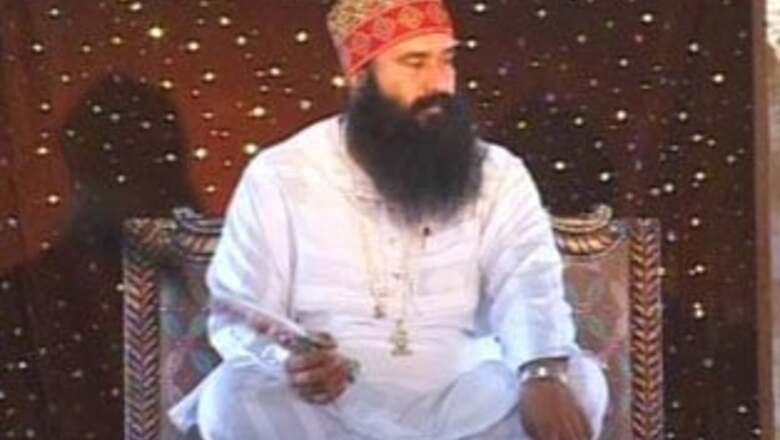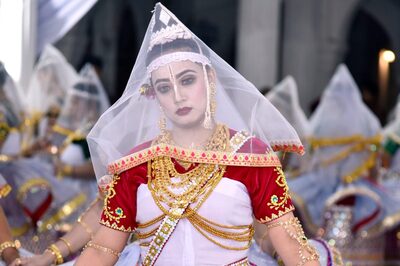
views
Chandigarh: Punjab's social and religious fabric is undergoing a gradual change - and divisions too - with the increasing influence of controversial deras, or sects, headed by self-styled godmen who have capitalised on the tensions between orthodox Sikhs and others.
The spotlight has swivelled to the deras once again with large parts of Punjab being held to ransom by followers of the Dera Sachh Khand protesting the attack on two of their leaders in Vienna.
The attack itself was the result of a simmering undercurrent between the dominant Jat Sikh community of Punjab and the largely Dalit Sikh followers of the sect. Much of the following that the sects are attracting is because people from lower casts and lower stratas of Punjab society are trying to seek a distinct identity for themselves.
There are other sects as well. The Nirankaris, whose ideological differences with the Sikh community led to 13 people being killed in a clash at Chowk Mehta in Amritsar in April 1978; the Namdhari sect that has followers in the state but has remained largely non-controversial; the biggest of them all, the Radha Soami sect, which has more than 100 million followers all over the country and the world.
A brief profile of the controversial sects:
DERA SACHH KHAND
Set up over 70 years ago in Ballan village near Jalandhar - 150 km from Chandigarh - by Sant Pipal Singh, this sect largely has followers from lower castes of Sikhs. The sect follows the ideals of Guru Ravidass, a 14th century preacher.
The sect leaders have been placing the Sikh holy book, Guru Granth Sahib, in their gurdwaras and religious ceremonies, much to the annoyance of the Sikh clergy and community. The Sikhs object to their holy book being placed equally with leaders of this sect.
Many villages and towns in Punjab have two gurdwaras - one for the upper caste Sikhs and another for those from lower castes. The sect has its following entirely from the lower caste Dalit Sikhs.
DERA SACHA SAUDA
Headquartered in a sprawling campus on the outskirts of Sirsa town in adjoining Haryana, 300 km from Chandigarh, Dera Sacha Sauda has been the most controversial amongst all sects in recent years.
It has a following of 20 million people in various states and over three million in Punjab. Most of the followers are people from lower castes and the lower strata of society. The sect has found a lot of acceptability amongst women and families as it preaches against drugs and alcoholism - a big menace in Punjab and Haryana.
Its head, Gurmeet Ram Rahim Singh, enjoys Z-plus security cover from the Haryana government despite being charged by the Central Bureau of Investigation on two counts of murder conspiracy and one count of rape of a sadhvi (female disciple).
PAGE_BREAK
He has been involved in a major controversy with the Sikh community since April 2007 after he attired himself on the lines of 10th Sikh guru, Gobind Singh, during a sect ceremony. His action led to large scale violence in Punjab, Haryana, Jammu and other places.
He moves around in a fleet of bulletproof Lexus' and other luxury vehicles. He has survived assassination attempts in the past. Despite the controversies around him, the sect leader continues to enjoy popularity among his growing number of followers. He is on the hit-list of Sikh terrorists.
The sect was set up in 1948 by Shah Mastana who came from Baluchistan area (now in Pakistan). Shah Mastana was succeeded by Shah Satnam Singh and Gurmeet Ram Rahim Singh succeeded him after a controversy. The sect is known for its social work, like coming forward to help victims of the tsunami and the Gujarat earthquake.
DIVYA JYOTI JAGRAN SANSTHAN (DJJS)
Led by godman Ashutosh Maharaj, it is based at Nurmahal town near Jalandhar. It was founded in 1983 and now has followers not just in India but also amongst NRIs in the US, Canada and Germany. The sect ideology is based on 'brahm gyan' (divine knowledge). It has also undertaken several social projects, including one for inmates of Asia's largest prison - the Tihar jail in New Delhi.
The sect has been involved in several controversies, especially with the Sikh community, on ideology. The sect leader is on the hit-list of Sikh terrorists. Sect followers have even attacked media offices in Jalandhar in recent months.
BABA BHANIAREWALA SECT
It is headed by a self proclaimed 'baba', Piara Singh Bhaniarewala, and based in village Dhamiana in Punjab's Ropar district. His followers are also mostly from the Dalit Sikh community. He has been involved in various controversies with the Sikh community as he compares himself to the Sikh gurus.
He and his followers have been accused of burning the Sikh holy book, Guru Granth Sahib, in recent years. His controversial book "Bhavsagar Granth" was banned in Punjab and he was arrested in 2001 when it was published.
Bhaniarewala, 51, a former faith-healer and government employee, has survived several assassination attempts in recent years.




















Comments
0 comment